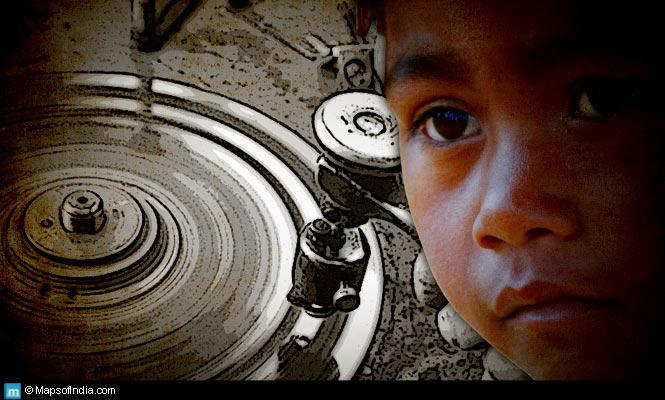
We Indians take pride in the fact that India is rapidly emerging as a leading developing nation. Prosperity is reaching several segments of people and the benefits have reached out to large parts of the country where none existed just a few decades ago. But the story is not entirely green. There is a dark underbelly that has and is contributing to this growth. It’s the use of child labour.
As a nation, we have long accepted this very cruel practice of using children as very cheap, and often, free labour. We have turned a blind eye to children being denied their right to be in school and an opportunity to better their lives. This problem is across both urban and rural areas and we have been by and large living with this black truth.
Consequences of child labour in India
The picture that emerges is dark. Children are working in hazardous export-oriented industries like fireworks, match works, electroplating, beedi rolling, glass blowing, brassware, lock making, glass blowing, lead mining and stone quarrying amongst several others. These are places that have a severe negative impact on the health of anyone working there. In the case of children, by the time they begin touching their teens, they are already inflicted with several life-threatening diseases.
Sitting at home in a city, we have no idea of the terrible conditions that these children are made to work in and for more than ten to twelve hours a day. In many cases, these children are offered by the parents in lieu of a loan that they may have taken from the factory owner. So it’s a barter deal; loan in cash that is repaid in kind through the child. Not all are barter deals. Some work for money where the pay is as little as ten rupees per day!
There are other situations where children are made to work. These are typically home run cottage industries like handloom and carpet weaving. This author has personally visited carpet weaving centres in Bhadohi and Mirzapur, in eastern U.P. and has seen children working alongside their parents, in virtually all homes lying in interior rural areas. The typical explanation given by the parents is that they see the child as an additional resource for income generation.
This is a necessity given the abject poverty prevailing in rural areas and in the absence of any social security system. People look at raising children as additional manpower, which further exacerbates the population problem that India is reeling under. It’s a Catch-22 situation! A poor villager can’t afford to raise children but continues to produce them in the hope that they will add to the income while also providing income security in his old age. This is one of the primary reasons one sees large families in rural areas where deep poverty prevails.
While this situation is still understandable even if not justifiable, what about child labour and abuse in urban and semi-urban cities and towns?
What about our homes?
This gets murkier. Remember the recent case in Vasant Kunj, a South Delhi middle–to-upper-middle class colony, where a maid from Jharkhand was locked up at home and was beaten and tortured for over several months. She was denied food and when she couldn’t take it anymore, she barely managed to scream for help. When the police along with representatives of an NGO finally managed to get an entry, they were horrified to find a starving sick girl with scars on her body that included burn marks. She was filthy, having skin infections, and was in a traumatized state. All this in the home of a lady working in a senior position in a well-paid MNC. And we think that child labour and abuse happens only in the villages? This is right here in the heart of India’s capital and in the home of a so-called highly educated and highly paid executive.
How can we live with this?
So what makes a person living in an urban area do this, especially in an age of high awareness of the laws, active roles played by NGOs, and a hyperactive media? Despite this, we still have people employing children as domestic labour and abusing them! What has made us so cold and cruel? Why have we allowed our inner conscience to die? What legacy of morality and ethics do we leave for our children when a child’s first education is supposed to start from home? The very home where another child is denied his basic fundamental right to education and a life of dignity.
A nation stands on the legs of its society and the citizens that live within it. If we have to build a nation where the next generation can live with dignity and fairness, where there is equal opportunity to prosper for all, then we have to ensure that we lay the very core of that society on a strong foundation i.e. our home.
If there is child labour happening in our home or in our vicinity, it is our moral right to raise our voice against it. If we don’t, we would lose our moral right to look into our children’s eyes and expect respect from them. We cannot raise one child’s future while denying another one.
Related Links:
Amendments in the Child Labour Law
Stop Female Foeticide – Save the Girl Child





